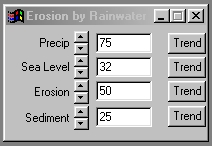| This is a child page. You can use Parent in the quick nav bar at the top or the bottom of the page to navigate directly back to the parent of this page. Some child pages are more than one level deep, and in that case will require more than one Parent click to reach the outermost document level. |
§ 16.84 - Entrainment
| Quick Reference to Scripting Command |
| a=ENTRAIN(precipitation, sea level, erosion, sediment) |
| Items in CAPS are 0/1 or ranges with more options than just 0/1. Ranges other than 0/1 are indicated by brackets, such as [0-2]. |
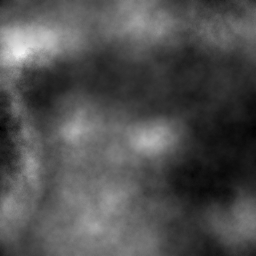 Original Heightfield |
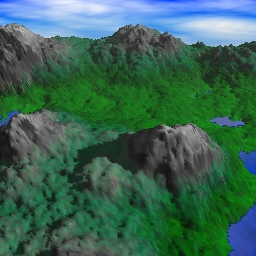 3D result of original |
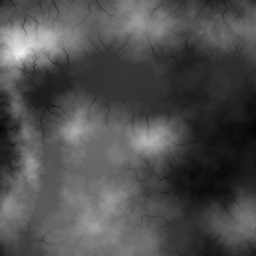 Severe entrainment |
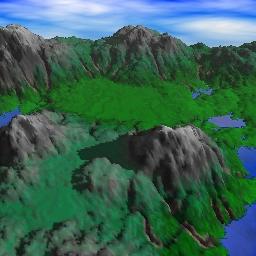 Severe entrainment |
Entrainment is the process of erosion of land by repeated cycles of water carrying away material. These cycles cause material at higher levels within confluences where water collects to become detached, and the resulting material to move downslope in the water. The resulting landscape develops ravines, cuts and canyons.
This operator applies a digital analog of this process to heightfields.
If you want to create rivers and bays going inland, set the Sea Level well below the sea level you intend to use for the 3D rendering of the heightfield. In this way, the land will be cut below the actual water level, and when the heightfield is rendered, these cuts will fill with water.
§ 16.84.1 - Entrainment Controls
§ 16.84.1.1 - Trends
Operator dialog controls that have a Trend button next to them offer animation functionality. Trend allows you to set that variable over a set of frames. Each frame of the animation can be thought of as a slice of time. The trends allow you to alter some, all, or none of the variables for a particular time slice. Variables that have multiple states can be set to any of a number of values in the trend. Variables that are either on or off can only have an on or off value in the trend. You will notice that the trend graphs have equidistantly spaced vertical lines. Each of these lines represents a frame in the animation. The number of frames can be altered using Sequence controls... in the TimeLine pull down menu. Animation lengths of 100 - 999 frames will be represented with a vertical bar being 10 frames, and animation length greater than 1000 frames will have a vertical bar for every 100 frames. Click here to view more information on Trends.
§ 16.84.1.2 - Precip
This is the amount of precipitation (rain, snow, hail) that falls.
§ 16.84.1.3 - Sea Level
This is the level at which the erosion ceases (water running into a large body of water only deposits sediment, rather than continues to cut a channel). This will directly relate to the Sea Level control in the Landscape operator.
§ 16.84.1.4 - Erosion
This is the number of times is rains. As this is increased, the time the operation takes will also increase.
This is one of the most compute-intensive operations in F/x.
Expect long running times!
§ 16.84.1.5 - Sediment
This is the amount of sediment that the water can carry. In nature, this varies with the type of soil.
, Previous Page . Next Page t TOC i Index o Operators g Glossary
Copyright © 1992-2007 Black Belt Systems ALL RIGHTS RESERVED Under the Pan-American Conventions
WinImages F/x Manual Version 7, Revision 6, Level A
